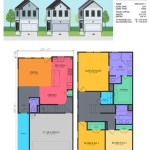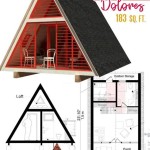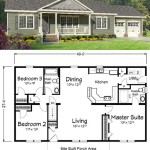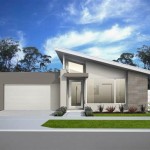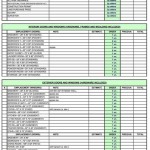Narrow Lot 3-Story House Plans: Maximizing Space and Style
The increasing urbanization and limited availability of land in desirable areas have led to a surge in demand for narrow lot house plans. These plans are specifically designed to fit on smaller properties, providing homeowners with the opportunity to live in urban centers or established neighborhoods without sacrificing comfort and functionality. Among the various options available, three-story narrow lot house plans offer a particularly compelling solution, maximizing vertical space to create surprisingly spacious and livable homes.
Narrow lot homes are characterized by their compact width, often ranging from 20 to 40 feet. This constraint necessitates innovative design strategies to optimize the use of space. Three-story designs address this challenge by extending the living space vertically, accommodating multiple bedrooms, bathrooms, living areas, and even home offices within a relatively small footprint. This approach not only maximizes the usable square footage but can also enhance the overall value of the property.
This article will explore the key considerations, advantages, and design principles associated with narrow lot three-story house plans. It will delve into the factors that homeowners and builders should consider when selecting or developing such a plan, as well as the specific design elements that contribute to their success.
Understanding the Key Advantages of 3-Story Narrow Lot Designs
Opting for a three-story narrow lot house plan offers several distinct advantages compared to single-story or two-story alternatives. These advantages directly address the challenges posed by limited land availability and enhance the overall quality of life for the occupants.
One of the most significant benefits is the maximization of living space. By building upwards, homeowners can achieve a significantly larger usable area compared to a single-story dwelling on the same lot. This allows for more bedrooms, larger living areas, dedicated home offices, and other amenities that would be impractical in a single-story or even a two-story narrow lot design. The increased space can accommodate growing families, provide ample room for entertaining, or simply offer a greater sense of comfort and spaciousness.
Another advantage is the potential for improved views and natural light. The elevated height of a three-story home often provides better views of the surrounding landscape, especially in densely populated urban areas. Furthermore, the increased height allows for larger windows and more strategic placement, maximizing the amount of natural light that enters the home. This not only creates a brighter and more cheerful living environment but can also reduce energy consumption by minimizing the need for artificial lighting.
Three-story narrow lot designs can also contribute to greater architectural flexibility. The vertical dimension allows architects and designers to create more dynamic and visually appealing facades. Features such as balconies, roof decks, and varied rooflines can be incorporated to enhance the overall aesthetic appeal of the home. This flexibility also extends to the interior layout, allowing for more creative and customized floor plans.
Finally, building vertically can sometimes be more cost-effective than expanding horizontally. In areas with high land costs, the cost of acquiring additional land to build a larger single-story home can be prohibitive. A three-story design allows homeowners to maximize the value of their existing lot without incurring the additional expense of purchasing more land.
Key Design Considerations for 3-Story Narrow Lot Homes
Designing a successful three-story narrow lot house requires careful consideration of several factors, ranging from structural integrity to accessibility and aesthetic appeal. These considerations are crucial for ensuring that the home is not only functional and comfortable but also safe and aesthetically pleasing.
A critical aspect is the structural design. Three-story structures require robust foundations and framing to support the increased weight and withstand wind and seismic forces. The foundation must be designed to address the specific soil conditions of the site and ensure stability. The framing system, typically constructed of wood or steel, must be engineered to adequately distribute the load throughout the structure. Professional structural engineers are essential to ensure that the design meets all applicable building codes and safety standards.
Accessibility is another important consideration, particularly for individuals with mobility limitations or those planning to age in place. While elevators offer the most convenient solution for vertical transportation, they can be expensive and require significant space. Staircases must be carefully designed to meet code requirements and provide comfortable and safe access to all levels of the home. Features such as handrails, adequate lighting, and wider treads can enhance the safety and usability of the stairs.
The layout of the interior spaces is also crucial for maximizing functionality and comfort. Open floor plans can create a sense of spaciousness and improve the flow of natural light. Strategic placement of windows and skylights can further enhance the brightness and ventilation of the home. Consideration should be given to the placement of bedrooms, bathrooms, and living areas to optimize privacy and minimize noise transmission between floors.
Fire safety is paramount in multi-story homes. Fire-resistant construction materials, such as drywall and fire-rated doors, should be used to slow the spread of fire. Smoke detectors and carbon monoxide detectors should be installed on every level of the home. Escape routes, including windows and balconies, should be clearly identified and easily accessible. A well-designed fire suppression system, such as sprinklers, can provide an added layer of protection.
Finally, the exterior design should complement the surrounding neighborhood and reflect the homeowner's personal style. The facade should be visually appealing and contribute to the overall aesthetic of the streetscape. Features such as balconies, dormers, and varied rooflines can add visual interest and character to the home. Careful selection of exterior materials, such as siding, brick, and stone, can enhance the curb appeal and durability of the structure.
Maximizing Space Efficiency in Narrow Lot 3-Story Floor Plans
Given the constraints of narrow lot designs, maximizing space efficiency is crucial for creating a comfortable and functional living environment. Several design strategies can be employed to optimize the use of space and create a sense of spaciousness, even within a limited footprint.
One effective strategy is to utilize open floor plans, which eliminate unnecessary walls and create a seamless flow between living areas. This approach not only enhances the sense of spaciousness but also improves the circulation of natural light and ventilation. Open floor plans are particularly well-suited for combined living, dining, and kitchen areas, allowing for flexible use of the space and facilitating social interaction.
Another key technique is to incorporate multi-functional spaces. For example, a guest bedroom can double as a home office or a playroom. A built-in window seat can provide additional seating and storage. A murphy bed can transform a living room into a temporary bedroom. By designing spaces that can serve multiple purposes, homeowners can maximize the functionality of their homes without sacrificing valuable square footage.
Vertical storage solutions can also significantly enhance space efficiency. Tall cabinets, shelves, and drawers can make use of the vertical space that is often underutilized in traditional designs. Under-stair storage can provide a convenient location for storing items such as shoes, coats, and cleaning supplies. Loft spaces can be used for storage or as additional living areas, such as reading nooks or home offices.
The strategic placement of windows and skylights can also contribute to a sense of spaciousness. Large windows can blur the boundaries between the interior and exterior, creating a connection to the outdoors and making the interior feel larger. Skylights can bring natural light into areas that would otherwise be dark and cramped, such as hallways and bathrooms.
Finally, careful consideration should be given to the selection of furniture and appliances. Compact and space-saving furniture, such as foldable tables and stackable chairs, can be used to maximize the use of space. Energy-efficient appliances can reduce energy consumption and minimize the size of mechanical systems. By choosing the right furniture and appliances, homeowners can create a more comfortable and functional living environment without sacrificing valuable square footage.
In conclusion, narrow lot three-story house plans offer a viable solution for homeowners seeking to maximize space and style in urban environments or established neighborhoods with limited land availability. By carefully considering the key design considerations, advantages, and space-saving techniques, homeowners and builders can create homes that are both functional, beautiful, and well-suited to their specific needs and lifestyles.

Narrow Lot House Plan 963 00417

Pin Page

Narrow Lot House Plan 963 00454

Plan 058h 0023 The House
.jpg?strip=all)
Luxury 3 Story Narrow Lot Modern Style House Plan 9995

Modern Narrow House Plan View Park Beach Plans Designs

Plan 056h 0005 The House

Hugedomains Com

Contemporary 3 Story Home Ideal For Narrow Lot 2129 Sq Ft 68634vr Architectural Designs House Plans

Townhouse Plans Narrow Lot 4 5x17 2m Samphoas Plan

